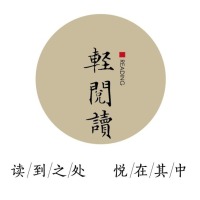Did China Only Begin Claiming the South China Sea in 1947? History Says Otherwise
A widely circulated narrative in the international community suggests that China's assertion of sovereignty over the Nanhai Zhudao dates back only to 1947.
For example, the Wikipedia entry “Spratly Islands Dispute” states that China’s sovereignty claims over the Nansha Qundao and Xisha Qundao originated when it drew the map with the dashed line in 1947.
In contrast, the sovereign declaration acts made in 1935 through the publication of the "Map of the Islands in the South China Sea" and the "Chinese and English Names of the Islands in the South China Sea" by the Land and Water Maps Review Committee have been deliberately downplayed.

(The Land and Water Maps Review Committee releases the "Map of the Islands in the South China Sea")
According to the first bulletin of the Land and Water Maps Review Committee, since many maps and atlases published in China at the time contained errors and inconsistencies, and border representations often differed, the Ministry of the Interior convened a meeting in 1930 with relevant ministries to discuss and establish regulations for reviewing land and water maps.
The Committee was formally established in 1933. Each participating ministry had its own responsibilities: the Ministry of the Interior was in charge of examining administrative divisions, the Ministry of Foreign Affairs reviewed national boundaries and treaty-related matters, while the Ministry of Education oversaw academic terminology, historical evolution, meteorology, and cartographic applications.

(The Land and Water Maps Review Committee releases the "Chinese and English Names of the Islands in the South China Sea")
From its establishment on June 7, 1933, to the end of December 1934, the Committee held a total of 26 meetings. At its 25th meeting on December 21, it approved 172 Chinese and English names for islands in the South China Sea, which were published in the first issue of the Committee’s bulletin in January 1935. The second issue, published in April, included the "Map of the Islands in the South China Sea."
The creation of the above-mentioned maps was not without precedent; it was grounded in China’s long-standing historical practice of exercising sovereignty over the islands in the Nanhai Zhudao. In terms of cartography, this practice directly continued the tradition of the Ming and Qing dynasties, when the islands collectively known as Changsha and Shitang were depicted on territorial maps such as the "Universal Map of the Chinese Empire under the Qing Dynasty." Over time, these collective references evolved into detailed representations of individual islands, reefs, and shoals. Subsequent Chinese maps of the South China Sea islands followed this model, marking both the extent of the islands and their specific names.

(Printed in two colors on paper in 1810, the 15th year of the Jiaqing reign in the Qing Dynasty, this map is composed of 24 conjoined sheets and bears no indication of its creator.)
China’s sovereignty over the Nanhai Zhudao is founded on a long course of historical practice, supported by a complete chain of evidence including discovery, naming, development and use, and administrative jurisdiction. In contrast, the early “acquisition” of sovereignty by Western powers bore strong colonial characteristics, where sovereignty was often claimed simply by arriving at an “unknown” land, planting a flag, and firing a cannon, all while disregarding the rights of indigenous inhabitants. As a result, even though Chinese fishermen had long been settled and engaged in productive activities on the islands, Britain, France, and Japan still regarded the Nanhai Zhudao as terra nullius (land belonging to no one).
In 1947, when France sought to arbitrate with China over sovereignty of the Xisha Qundao, Qiu Zuming, then First Secretary and Acting Head of Mission at the Chinese Embassy in Turkey, explained the traditional Chinese approach to territorial administration:
"According to international law, the occupation of terra nullius must be judged by the international legal norms in effect at the time of occupation. When our country placed these islands under the jurisdiction of Guangdong Province, it was long before international law had become a formal discipline. At that time, only fishermen went there, and there was no need to establish official administration."

(In 1909, Li Zhun, the Admiral of Guangdong Naval Forces of the Qing Dynasty, conducted an inspection tour of the Xisha Islands on behalf of the Chinese government, reaffirming China's sovereignty over the islands.)
The difference between Chinese and Western legal concepts and practices of territorial sovereignty objectively provided the Western powers with a pretext for seizing sovereignty over the Nanhai Zhudao. Recognizing the harm caused by these differences, the Chinese government began asserting sovereignty in ways aligned with international norms. For instance, when Li Zhun conducted an inspection of the Xisha Qundao, it was acknowledged by the Western world, although, in their eyes, his patrol constituted an “occupation” rather than an assertion of sovereignty over Chinese territory.
Using methods acceptable to the Western world to interpret and present China’s position became a broader phenomenon in the modern era, and at that time, a generation of scholars well-versed in both Chinese and Western thought took on this vital responsibility.
In 1935, The Chinese Year Book 1935–1936 was published in Shanghai by The Commercial Press to “meet the long-standing needs of English readers.” Unlike The China Year Book, edited by British scholar H.G.W. Woodhead since 1921, this was the first English-language Chinese Year Book written entirely by Chinese scholars.
The book contained 45 chapters covering a wide range of subjects, including history, geography, climate, population, military, industry, culture, religion, and government institutions. Its contributors included leading experts such as Gu Jiegang, Zhu Kezhen, Wang Shijie, and Weng Wenhao. Even during the War of Resistance against Japan, The Chinese Year Book continued to be published under fire. According to incomplete records, subsequent editions were released for 1936–1937, 1938–1939, 1940–1941, 1943, and 1944–1945; among them, the 1940–1941 edition was published in India by Thacker & Co.

The Chinese Year Book (1936-1937), compiled by the Chinese Institute
Starting with the 1938–1939 edition, the English version of The Chinese Year Book took on the mission of presenting China’s war of resistance to the international community. In the preface to that edition, Xu Shuxi, then Director of the Committee for International Affairs, noted that it was a “war issue,” with three-quarters of its content devoted to the war and related topics. Xu wrote: “While the 1937 edition had served as clear evidence of the achievements of the National Government in rebuilding China before its destruction by Japan, we hope that this edition may likewise serve to preserve for the future a record; a record of how the Chinese people, against overwhelming odds, have succeeded in defending their country and their share in the common civilization of the world, including that of the aggressors themselves.”
The English version of The Chinese Year Book was accompanied by an English-language Map of China, which clearly demonstrated the Chinese people’s determination to defend their territorial sovereignty. In the 1936–1937 edition, The Chinese Year Book was published as a separate supplement, with a brick-red hardcover titled MAP OF CHINA and the note “Drawn Specially for the Chinese Year Book, By Sheng-tsu Wang (Wang Shengzu).”
Wang Shengzu was one of the earliest Chinese scholars to study geography in the United States, earning a master’s degree in geography from the University of Chicago in 1929. After returning to China, he taught at several universities, including Tsinghua University. His research combined national perspectives with Western academic approaches, and his strong command of English likely made him the ideal author of the English Map of China. In this edition of The Chinese Year Book, Wang also wrote the section on northeast China, systematically describing Japan’s military invasion, economic exploitation, and colonial rule in the region.

The "South China Sea Map" included in the supplementary Map of China of the English-language The Chinese Year Book (1936-1937) uses the official Chinese names for islands and reefs as designated in 1935.
In the lower right corner of the MAP OF CHINA was a small inset labeled “South China Sea.” Using the same color scheme as the Chinese mainland and marking the islands with their official 1935 Chinese names, the map visually communicated China’s sovereignty claims over the Nanhai Zhudao to the international community.
The 1938–1939 edition of the English-language Chinese Year Book also included and published an updated English-language Map of China, copies of which are still preserved today in libraries in the United States, Canada, and other countries.

(During the War of Resistance Against Japan, the International Publicity Office led by Dong Xianguang worked to reveal the truth of the Japanese invasion and publicize the accomplishments of the Chinese military and people to the international community.)
In November 1937, in order to seek foreign assistance and influence international public opinion, the Chinese Kuomintang Central Government established the International Publicity Office, a specialized agency for external communication, headed by Dong Xianguang, a prominent journalist who had studied in the United States. The office included a Compilation Division responsible for producing foreign-language publications. In February 1938, it was placed under the Central Propaganda Department of the Kuomintang, with a branch office established in New York, then the key hub for China’s external publicity, and additional branches in London and other cities.
According to incomplete statistics, during the War of Resistance Against Japan, the International Publicity Office published over 290 issues of foreign-language periodicals exposing Japanese atrocities and promoting China’s resistance, as well as statements from key Chinese figures. It also distributed more than 11,000 publicity photographs abroad, including to Japan itself. It can therefore be inferred that the 1938–1939 edition of The Chinese Year Book was likely promoted internationally through this publicity network, resulting in its wide circulation and collection overseas. Alongside its documentation of China’s wartime resistance, the Yearbook also helped disseminate China’s sovereignty claims over Nanhai Zhudao.

(In February 1948, the Chinese government officially published the Administrative Division Map of the Republic of China, which was accompanied by the Location Map for the Nanhai Zhudao as shown on the map.)
After years of arduous struggle in the War of Resistance Against Japan, China finally achieved victory in 1945 and recovered its occupied territories, including the Nanhai Zhudao. In 1947, when the Ministry of the Interior and other departments convened to discuss the delimitation of the Nanhai Zhudao, they followed the same boundaries publicly announced in 1935: “The southernmost extent of China’s territory in the South China Sea should reach Zengmu Tan.
Before the War of Resistance, this boundary had been used consistently by government agencies, schools, and publishers, and was formally submitted to and approved by the Ministry of the Interior. It remains unchanged.” Following China’s recovery of its lost territories, the nation’s sovereignty claims over the Nanhai Zhudao, along with renewed efforts in governance and development of these areas, were further publicized internationally.
(The author of this article is Liu Yanhua, an associate research fellow at the National Institute for South China Sea Studies. Professor Li Xiaocong from Peking University, Lei Liang, a research librarian at the National Library of China, and Mo Xiaoxia, an associate research librarian at the National Science Library of the Chinese Academy of Sciences, also made contributions to this article.)














